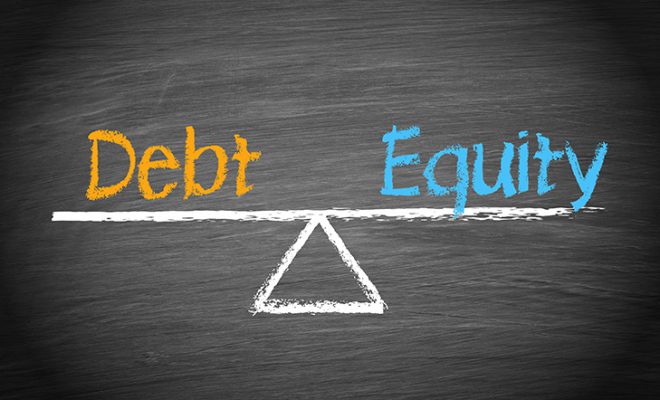What is Tax-Loss Harvesting and Why is it Important?
Tax-loss harvesting refers to a strategy wherein you can sell securities at a loss to offset your capital gains tax due on the sale of profitable securities. In other words, you can sell your investment at a loss to lower your tax liability. Tax-loss harvesting can also be used to lower your overall net profit made on your other investments.
To fully take advantage of your investments, you need to stay invested for the long term. By doing so, you can generate exponential returns and negate any market downturns that you may experience along the way. You have to be disciplined when it comes to investing and inculcate healthy investment habits to generate wealth.
With that said, sometimes due to market volatility, you may suffer a loss and your investments may not work out as you hoped they might. But there is no need to fret about it. You can use your loss making investments to reduce your tax liability as you can claim a tax deduction for the losses you might have suffered on your investments. Additionally, this amount can be offset against your ordinary income. This includes any profits you may have made from the sale of profitable investments. Reach out to a professional financial advisor to learn more about tax-loss harvesting strategies and how you can use them to reduce your taxability.
Herein, we will discuss how tax-loss harvesting works and why it is important for an investor to employ this strategy.
Table of Contents
What is meant by tax-loss harvesting?
In simple terms, the act of writing off any loss-making investments is known as tax-loss harvesting. It’s essential to note that while losses from previous years cannot directly offset gains in the current year, they can be carried forward for future use. Capital losses can offset capital gains within the same tax year, and any excess losses can offset other income, up to $3,000, with the remainder carried forward. This allows individuals to use past losses to offset future gains and a portion of ordinary income, affecting an investor’s tax strategy over multiple years.
How does tax-loss harvesting work?
The basic principle of tax-loss harvesting is to carry out the sale of loss-making investments to claim a tax deduction in the same calendar year. Any capital gains made from investments (both short-term and long-term) are taxable. Hence, if you sell your investments at a loss, you can offset it against the profit, thereby, reducing your taxable income. For instance, let us say, you sell stock A for a profit of $5,000. You notice that stock B is in the red and you would have to incur a loss of $2,500 on the investment. Herein, you can offset the profit of $5,000 with the $2,500 loss. Thus, you would end up with a net profit of $2,500 at the end of the day.
This is known as ‘harvesting’ a loss. By offsetting the $2,500 loss against your $5,000 profit, not only do you reduce your taxable gains but also pay significantly lesser taxes. If you hadn’t offset the profit, you would have had to pay taxes on the entire $5,000 sum and not the much lower $2,500.
What is the importance of tax-loss harvesting?
Investors through tax-loss harvesting can reduce the amount of tax they end up shelling out on any capital gains made by them. By doing so, they can turn the loss suffered by them into an advantage to ensure they derive the maximum benefit out of their capital.
The benefits of tax-loss harvesting are:
1. Helps in portfolio rebalancing
It is advised by most financial experts that you must evaluate your portfolios at regular intervals of time to rebalance them, if needed. Portfolio rebalancing helps ensure optimal allocation of assets as well as maintaining a healthy balance between returns and risks. After assessment, you may decide to sell an investment at either a loss or a profit. After the sale, you can allocate the additional funds to other securities in your portfolio. Herein, with the help of tax-loss harvesting, you can rebalance your portfolio to ensure it remains on track to achieve your financial goals and needs.
2. Helps secure a tax break even if no profits have been made
Suppose you were unable to sell any investment at a profit during a particular calendar year. However, it is reasonable to assume that you may have sold some investments at a loss. In this situation, you can use the loss-making investments to reduce the taxes you will pay through tax-loss harvesting. Using this strategy comes with a caveat that you must ensure that you reinvest the proceeds of the tax break that you may have received. For instance, let us say you sold stock D at a loss of $3,000 and you come under the 30% tax bracket. This means that you can claim a tax rebate of $900 on the sale of the investment. However, having claimed the tax break, now you may have to reinvest this $900 into similar securities earlier sold by you.
3. Encourages investing in a bearish market
In a bearish market when the stocks are largely trading at a much lower value, you can deploy tax-loss harvesting to reduce your losses and boost your potential profits. At this time, you can buy fundamentally strong stocks at a lower price which generally tend to be on the expensive side more often or not. You can use the proceeds received from tax breaks to buy these securities at a lower price.
4. Helps lower tax penalties from capital gains
Short-term capital gains attract the highest tax rates in the country. If you are a high value investor who regularly makes a profit in high five-low six figures, you can use tax-loss harvesting to reduce your capital gains and consequently your taxable income.
Things to keep in mind when using tax-loss harvesting
Before you employ tax-loss harvesting, you should take into account the following:
1. The wash sale rule
Part of the regulatory framework in tax-loss harvesting is the ‘wash sale’ rule, a vital provision aimed at preventing investors from repurchasing the same security immediately after claiming a loss to lower their profits. This rule prohibits investors from buying back the same security within 30 days after selling it to claim a tax loss. Importantly, if an investor breaches this rule, the disallowed loss from the sale is added to the cost basis of the repurchased security. This adjustment significantly influences any future gains or losses when that security is eventually sold again, a crucial point that investors should consider
2. Sale of a security to claim a tax break
Usually, stocks tend to experience short-term volatility wherein their prices may rise or fall substantially. However, if you plan to invest with a long-term horizon, you may wish to reconsider selling the security to potentially benefit from a huge gain in their value in the future.
3. Being careful when using tax-deferred accounts
Do note that you can only claim a tax break from tax-loss harvesting in taxable accounts and not tax-advantaged or tax-deferred accounts like 401(k) or Individual Retirement Accounts (IRAs). It, however, still remains a significant strategy for taxable brokerage accounts where it can be effectively utilized to manage gains and losses for tax purposes.
4. Neglecting to consider service fee
Every time that you prepare the paperwork for tax-loss harvesting, you have to pay a service fee for it. If you carry out multiple tax harvesting transactions in a calendar year, you may have to shell out a considerably higher service fee. This is counterproductive and may also end up costing you any capital gains or ordinary income tax savings that you may have made.
To conclude
Tax-loss harvesting is an effective tax-saving strategy where you can offset your losses against profits to lower your tax liability. As stated earlier in the article, you can claim a net loss of $3,000 annually as per the mandate of the IRS. This amount may not seem significant but by reinvesting it, you can significantly boost your future finances through the power of compounding.
This does not mean that you overuse tax-loss harvesting to claim a tax benefit at each and every opportunity you get. You have to hedge your bets after carefully studying the performance of a security to figure out whether selling it to get a tax rebate is wise or not. If you misuse tax-loss harvesting, it may prevent you from becoming a financially disciplined investor. Before taking this route, you must reach out to a professional financial advisor who can advise you on such matters and help you make financially wise decisions.
Use the free advisor match service to match with an experienced and certified financial advisor who can help you effectively use tax-loss harvesting as a strategy to lower your tax liability. Give us basic details about yourself, and the match service will match you with 1-3 professional financial fiduciaries that may be suited to help you.
For additional information on retirement planning strategies that can be tailored to your specific financial needs and goals, visit Dash Investments or email me directly at dash@dashinvestments.com.
About Dash Investments
Dash Investments is privately owned by Jonathan Dash and is an independent investment advisory firm, managing private client accounts for individuals and families across America. As a Registered Investment Advisor (RIA) firm with the SEC, they are fiduciaries who put clients’ interests ahead of everything else.
Dash Investments offers a full range of investment advisory and financial services, which are tailored to each client’s unique needs providing institutional-caliber money management services that are based upon a solid, proven research approach. Additionally, each client receives comprehensive financial planning to ensure they are moving toward their financial goals.
CEO & Chief Investment Officer Jonathan Dash has been profiled by The Wall Street Journal, Barron’s, and CNBC as a leader in the investment industry with a track record of creating value for his firm’s clients.















